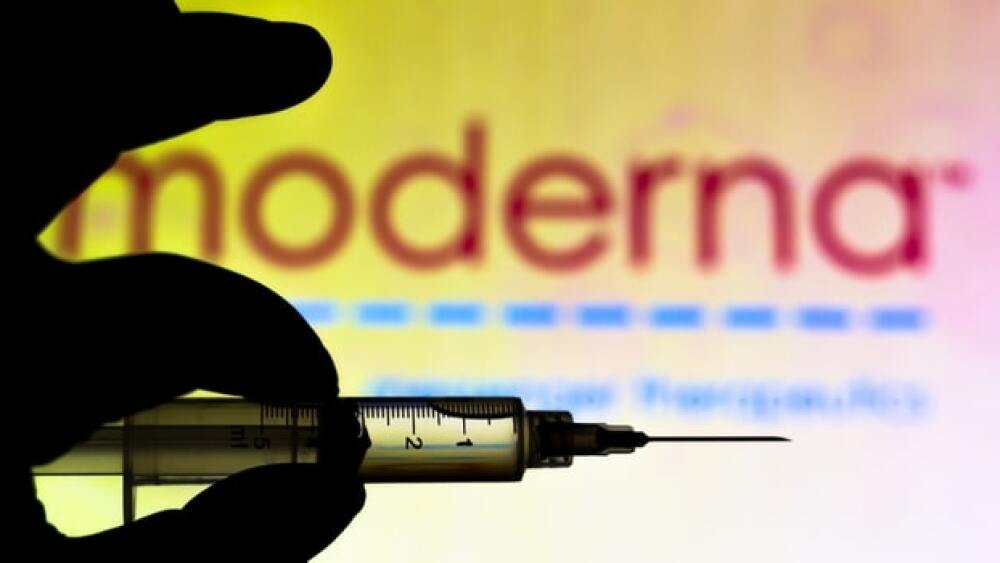Shares of Moderna are down nearly 10% this morning despite the company posting positive interim results from an experimental seasonal flu vaccine.
rafapress/Shutterstock
Shares of Moderna are down nearly 10% this morning despite the company posting positive interim results from an experimental seasonal flu vaccine. The company’s mRNA vaccine against COVID-19 is highly effective, but the experimental flu vaccine based on the same technology is, so far, not distinguishing itself from currently-available influenza vaccines.
In an announcement this morning, the company provided early data from a Phase I study of quadrivalent flu vaccine (mRNA-1010) successfully boosted titers against all four strains in older and younger adults. This occurred even at the lowest dose.
Specifically, Moderna’s 50 µg dose, which was also administered in older adults, generated “robust increases in geometric mean antibody titers against H1N1 and H3N2,” which are the strains responsible for the vast majority of morbidity and mortality in this age group. Quadrivalent mRNA-1010 encodes the hemagglutinin (HA) protein from four different seasonal influenza viruses. So far, there have been no significant safety concerns reported, according to the company.
In addition to the interim data, Moderna has fully enrolled a Phase II study of the experimental flu vaccine that will compare it against existing vaccines on the market. Moderna’s mRNA-1010 uses the same technology as the company’s COVID-19 vaccine.
While the results were positive, the company noted this morning in an investor presentation that the data was not as robust in older adults as a flu vaccine developed by Sanofi, Reuters reported. Jefferies analyst Michael Yee said the data is good, but “not necessarily better than some high efficacy vaccines such as Flublok or Fluzone HD.”
“We view the data as promising and somewhat in-line with our expectations for good increases in antibodies and at least in-line w/ traditional egg-based flu vaccines. There is going to be debate on whether it’s truly better than newer high-efficacy vaccines from Sanofi,” Yee said in a note.
In September, Maryland-based Novavax announced Phase III data for its Nanoflu vaccine against four influenza virus strains that showed non-inferiority to Fluzone. NanoFlu was well-tolerated and produced significantly enhanced humoral and cellular immune responses versus the comparator vaccine.
While Moderna’s stock has taken a hit due to the flu vaccine’s failure to distinguish itself so far, the company is well-ahead of rival Pfizer in developing an mRNA flu vaccine.
Alongside the company’s interim data announcement, Moderna noted that it is also planning to move forward with its beyond quadrivalent seasonal flu development candidates. The company is launching investigations into two next-generation vaccines, mRNA-1011 and mRNA-1012. The company’s mRNA-1011 will have one additional hemagglutinin antigen and mRNA-1012 will have two additional HA antigens.
Moderna is also planning to develop a pan-respiratory single dose booster vaccine that is adapted to the circulating strains of SARS-CoV-2, seasonal influenza and RSV. Moderna stated that it could be first to market with a COVID + Flu + RSV booster vaccine.
Moderna Chief Executive Officer Stephane Bancel called the interim data “an important milestone” in achieving its goal of alleviating viral concerns.
“We believe our mRNA platform is well-positioned to address the significant unmet need in seasonal flu as evidenced by our new beyond quadrivalent candidates, mRNA-1011 and mRNA-1012, which we believe will expand strain coverage and provide more options for public health officials,” Stéphane Bancel said in a statement.
Even as the Phase II program is underway, Moderna is already positioning itself to initiate a Phase III study. The company is ramping up manufacturing in anticipation of the greenlight from regulatory agencies.





